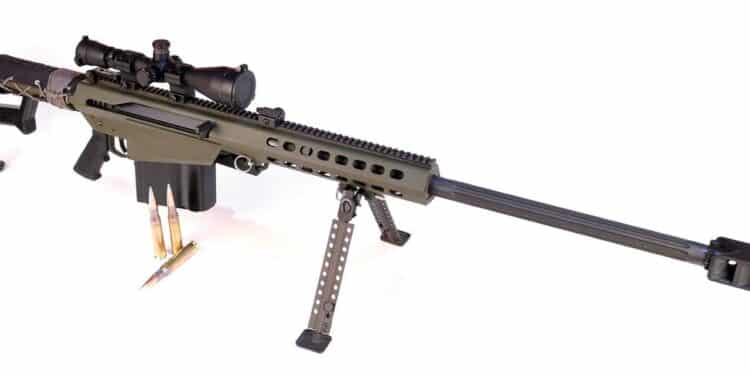Story & Photography by Will Dabbs, M.D.
Awesome is a mightily overused descriptor these days. The dictionary definition is “extremely impressive or daunting; inspiring great admiration, apprehension or fear.” The archetypal use in a phrase, once again per the dictionary, is, “The awesome power of the atomic bomb.”
As with such similar terms as cool, woke, radical, and text, context is everything, and modern cultural influences contort the meaning to fit the times. Such societal pressures tend to infuse otherwise pedestrian terms with an unfortunate abstruseness. In the case of firearms, however, one gun above all others cuts through the linguist’s otherwise impenetrable fog. The Barrett M82A1 Light Fifty excises all the ambiguity out of the term awesome.
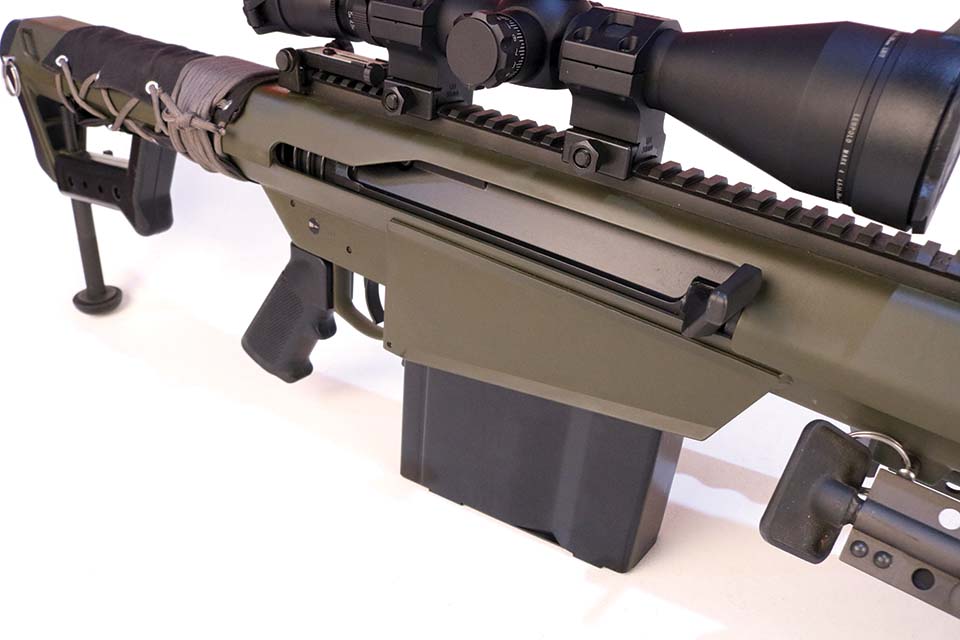
True Tactical Vision
Ronnie Barrett contrived the original M82 Light Fifty back in the 1980s. I’ve not had the pleasure of meeting Mr. Barrett, but that guy is a visionary. To translate the abstract idea of a man-portable, semiautomatic precision rifle that fires John Moses Browning’s behemoth .50 BMG (12.7x99mm) cartridge into something that can be safely and comfortably fired off the shoulder is a remarkable mechanical achievement. That he did so in such an elegant fashion is all the more impressive.
The Barrett M82 (barrett.net) is in essence a scaled-up version of the Browning-inspired Auto-5 long recoil shotgun. John Browning designed every major rifle-caliber automatic weapon used by American forces during World War II. With credentials like that, his opinions matter. The great man held 128 gun-related patents when finally he keeled over of heart failure while sitting in his son Val’s office in the FN plant in Liege, Belgium, at age 71 in 1926. Of all his remarkable gun designs, Browning himself claimed the Auto-5 was the one of which he was most proud.
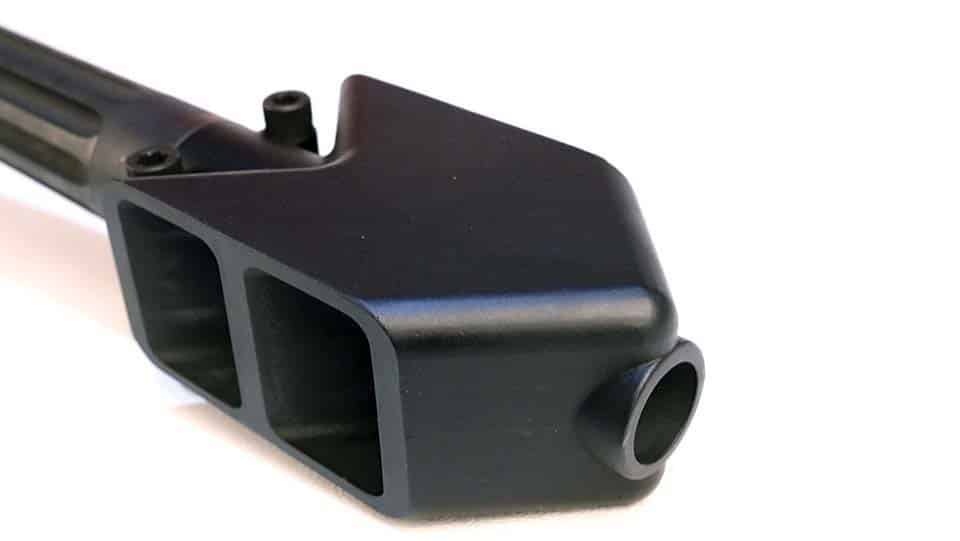
The Barrett M82 is a recoil-operated, semiautomatic, magazine-fed precision rifle. The gun is designed to accept an optical sight and feeds from a 10-round detachable box magazine. The elegant method by which Ronnie Barrett tamed the massive .50BMG cartridge warrants specific exploration.
At the moment of firing, the bolt and barrel assembly are locked together but remain free to move. The heavy barrel is generously fluted along its length but remains quite massive.

The barrel/bolt assembly then recoils deeply into the heavy pressed steel receiver against spring pressure. These two components then mechanically separate, and a dedicated return spring system returns the barrel to its neutral position. This action extracts the empty cartridge so it can be ejected out of the enormous right-sided ejection port.
Once ejection is complete, the bolt returns into battery via spring pressure, stripping another round out of the magazine in the process. The AR-15-style fire control system is then free to fire follow-up shots. While there is a great deal of violence pent up within this process, the nature of the design keeps the gun quite accurate even at long ranges.
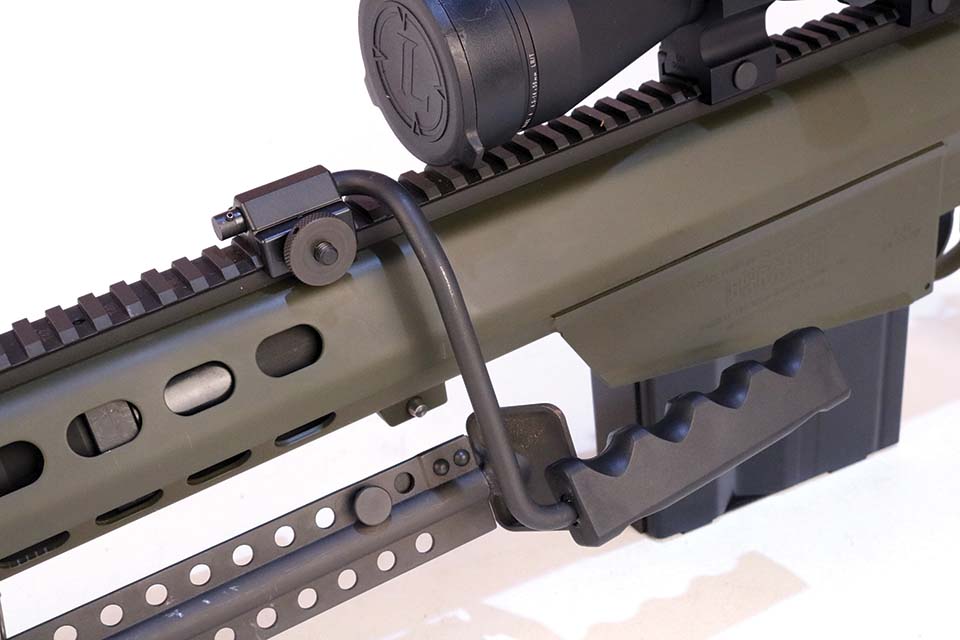
Art Imitates Life
In 1987, Paul Verhoeven directed a dystopian sci-fi epic written by Edward Neumeier and Michael Miner titled “RoboCop.” Set in Detroit, Michigan, in the near future “RoboCop” depicted a dark and broken world characterized by rampaging crime and the corrupt uber-corporation Omni Consumer Products (OCP) . In this world, law enforcement and public safety were contracted out to OCP with minimal government oversight. The resulting tale explored themes like unfettered capitalism, corporate greed, the power of an unchecked media and the corrupt nature of man.
All good movies hinge upon their villains, and Clarence Boddicker in “RoboCop” is one of the best. Played to perfection by the character actor Kurtwood Smith, Boddicker is a soulless nihilist who lives only for chaos. The weapon Boddicker and his mob of malevolent malcontents wields is referred to as the “Cobra Assault Cannon.”
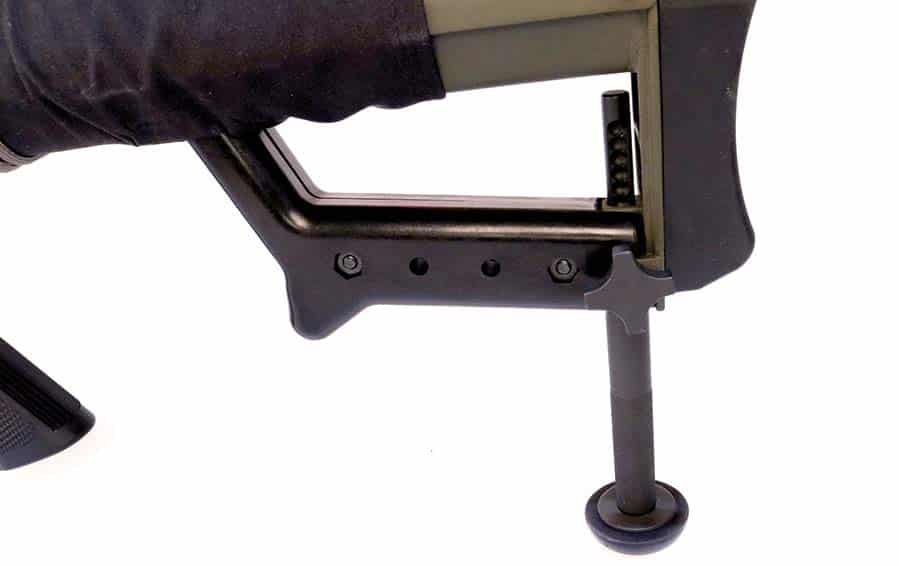
The Cobra Assault Cannon is at its heart an early Barrett M82 .50-caliber anti-materiel rifle adorned with a little fiberglass window dressing and an oversized optic. The imaginary Hollywood high explosive rounds these things throw are adequate to destroy an automobile or an armored stop-motion, death-dealing police robot. In the final climactic scene, Peter Weller’s RoboCop character uses one of the guns to take out a formidable ED-209 armored security drone.
The gun nerd truly committed to his craft will note that the rifle experiences a stovepipe jam that leaves a crimped .50-caliber blank hanging half out of the ejection port. The fact that I noticed that lends insight into why I have so few normal friends. Now hold that thought.

Trigger Time on the Cobra Assault Cannon
In 1987, I was a freshly minted paratrooper headed back to college after a fun-filled summer at Fort Benning. I answered an ad in the school paper to audition for a movie being made on my picturesque Southern university campus. The film was an entirely forgettable bit of socially engineered pablum called “Heart of Dixie.”
The movie was hardly Oscar material, but it was my first taste of Hollywood glitz. Ally Sheedy, Phoebe Cates, Treat Williams, Kurtwood Smith and Virginia Madsen starred, and the production occupied both the community and the campus for weeks. I thought it all more fun than a barrel of monkeys.
I actually got a fairly decent part in the movie. I had and have no marketable acting skills and will never be mistaken for handsome. However, my head was shaved so that was adequate to earn me the lead role as a National Guardsman who beats up the movie’s central character played by Allie Sheedy. However, that’s a tale for another day.
The spot did allow me to chill out with Kurtwood Smith for a bit. For those who are still reading, Smith was the guy who played the villain Clarence Boddicker in “RoboCop.” Kurtwood was a friendly enough gent, and I am a gun nerd. I therefore inevitably inquired regarding the weapons he used in “RoboCop.” Smith said that the Cobra Assault Cannons were just insanely heavy, and that it was really tough to manhandle the massive guns on screen and still look cool doing it. I always wondered what he was talking about until I handled one of my own.
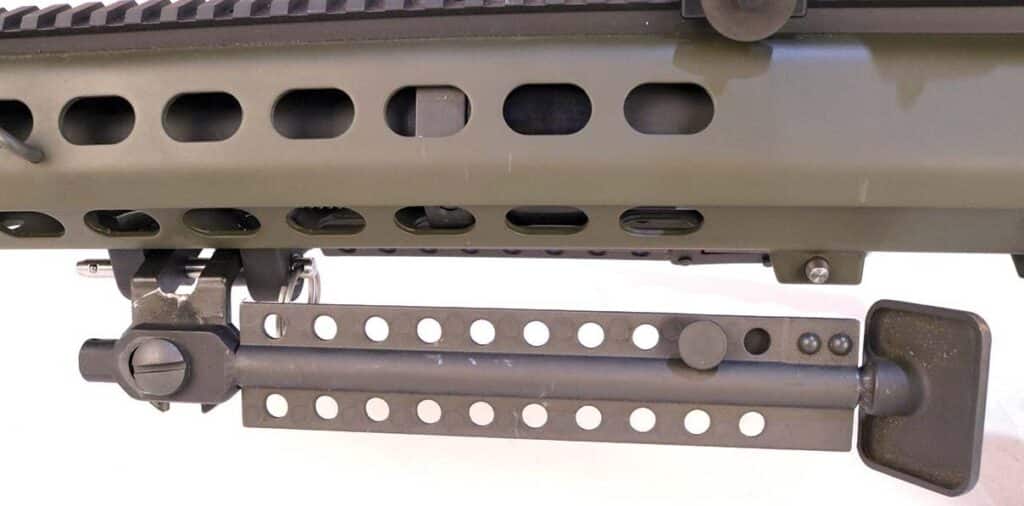
Taking the Plunge
I will admit to having been hopelessly enamored with the Barrett M82 ever since I saw “RoboCop” in the theater back in 1987. I studied gun magazine articles about the rifle and caught it in another movie or three, but there the dream languished for some three decades. I then saved my pennies basically forever, did a serious GunBroker.com recon and landed a spanking new OD Barrett M82A1 for my own. Here are my impressions.
The gun ships in a superb rolling hard plastic gun case. The case itself is truly epic. Though I didn’t actually try it, you could almost cram a corpse into this thing.
To fit inside this ample box the barrel assembly and optic must be removed. Fitting the barrel assembly takes mere moments without tools. However, remounting the optic necessitates that the gun be re-zeroed.
That’s kind of a pain. Were I hunting terrorists covertly in the Hindu Kush, having to re-mount my optic every time I retrieved my rifle would be a serious impediment. Fortunately for me, the closest I will ever get to the Hindu Kush is the History Channel.
Once you get the gun assembled, you come to appreciate the elegance of the design. The receiver is thick stamped steel, so the cheek weld is hot in the summer and cold in the winter. However, I am apparently one of maybe three male human beings in the known universe who can operate a sewing machine, so I whipped up an improvised cloth cheek cover. There’s nothing to it.
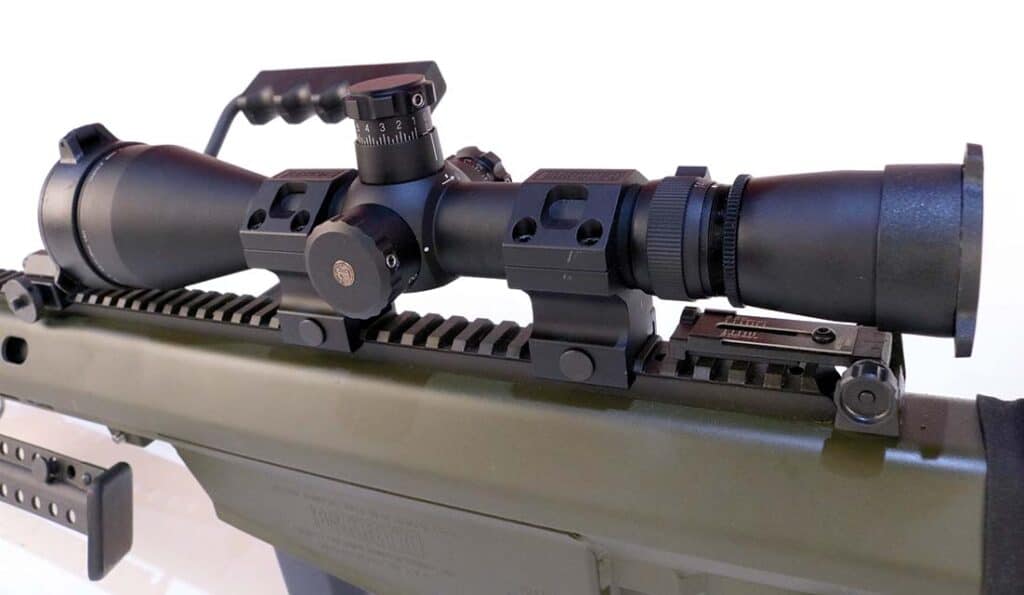
The folding steel bipod is reminiscent of that of the M60 machine gun and is both rugged and functional. The legs adjust independently for command height and are free to cant, but the unit does not pivot on the receiver. There is a screw-adjustable monopod located on the heel of the stock. I find that I can make very precise adjustments to the lay of the rifle using this device so long as the gun is arranged on a firm surface.
There is a removable folding carrying handle that affixes to the Picatinny rail up top that is quite useful given the gun’s prodigious mass and bulk. The gun comes with folding iron sights, but you have to remove the optic to access the rear bit. The entire rifle breaks down without tools via handy lock pins.
The M82A1 uses a standard M4 pistol grip, so the rifle interfaces nicely with the human form. The left-sided rotating safety is in the same spot as that of an M4 and operates intuitively. The magazine is just stupid huge and must be rocked in and out in the manner of a Kalashnikov. Like the AK, the magazine release is a thumb lever located behind the magazine along the midline.
The charging handle reciprocates with the bolt and is accessible on the right. The bolt throw is measured in kilometers, so you’ll want to be purposeful about charging the thing. It is important that you release the bolt at its rearmost position and let it slam forward vigorously of its own accord driven by the recoil spring. Riding the bolt at all can result in its not settling completely into battery.
The gun is available with either 20- or 29-inch barrels with a 1:15 rate of twist. With the barrel removed, the gun becomes relatively portable. A buddy who served as a member of a sniper team with a Ranger Battalion deployed downrange in Afghanistan told me that when they deployed with their Barretts operationally, they typically broke them down into two separate loads to better distribute the weight and bulk.
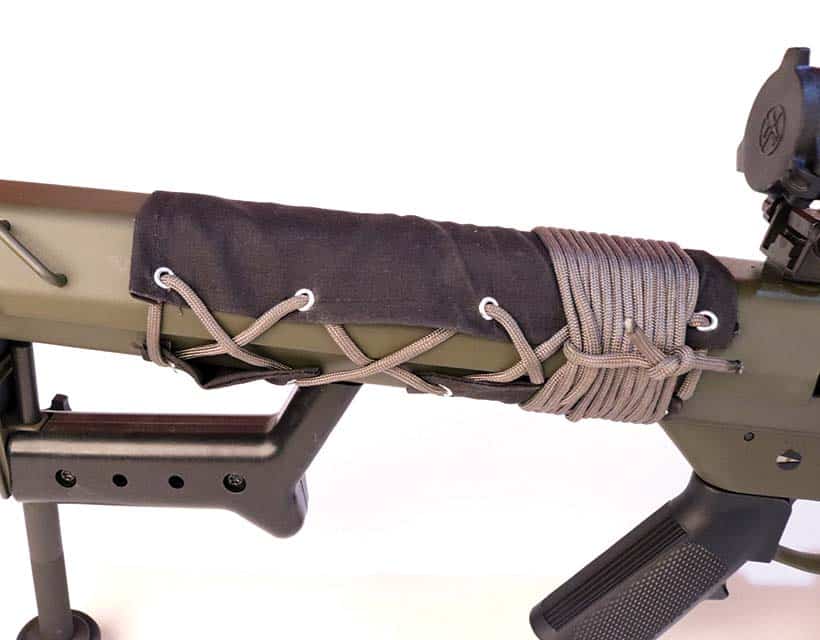
The harmonica-style muzzle brake looks cool and works well. Generous angled vents direct the chaos backwards to counteract the prodigious recoil of the massive round. The down side, however, is that if you stand to the side of the gun as it is being fired (like to take pictures for a gun magazine article), the overpressure will make your eyes feel like they are going to explode. Ask me how I know this.
Trigger Time
So what’s it really like to light one of these massive hand-sized rounds off mere inches from your soft pink anatomy? The visceral effect is about like swallowing a live hand grenade. Dirt, leaves and debris are launched vigorously into the air and subsequently worm into your eyes, ears and clothing. Phlegmatically speaking, however, the recoil really isn’t too bad. I would liken it to that of a 20-gauge shotgun.
The recoil impulse is more of a shove than a jolt thanks to all the reciprocating mass and Ronnie Barrett’s incontrovertible mechanical genius. I could be ready to launch a follow-up shot as soon as the dust settled in front of the big rifle. With proper ear protection and an ample supply of ammunition I could run this gun for a long afternoon without feeling overly violated.
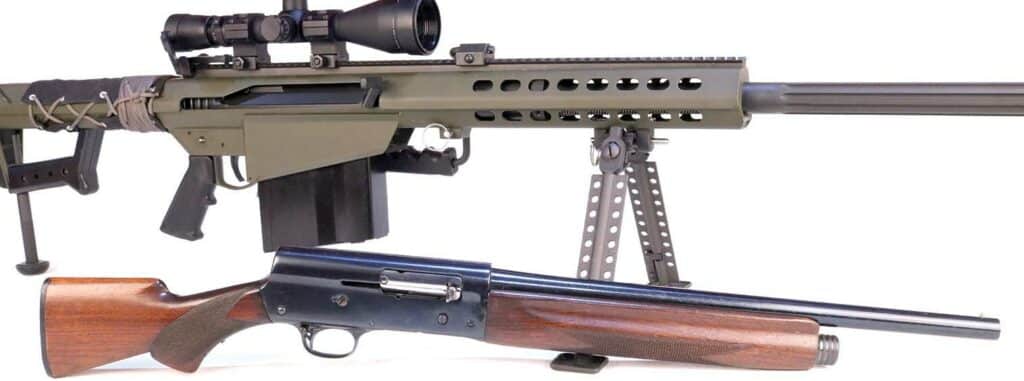
At close ranges the M82A1 seems like some thing that would be called a Cobra Assault Cannon. The gun feels like it would shoot through pretty much anything short of a bank vault door or Mount Rushmore. Reaching out a bit was an illuminating experience.
.50BMG ammo is expensive no matter where you get it. I bought some bargain basement blaster rounds made from harvested GI components for about $3 a piece and then proceeded to frustrate myself at 100m. I was punching those massive half-inch holes into groups perhaps 4 inches across now convinced that I had purchased an unimaginably expensive paperweight. Then I splurged for some of the “good stuff.”
Hornady .50BMG Match rounds push 750-grain A-MAX bullets to some 2,800 feet per second at the muzzle (hornady.com). To put that in perspective, that’s like firing about a dozen 62-grain 5.56mm rounds through a standard military M4 carbine simultaneously. These Hornady A-MAX rounds are also breathtakingly accurate. They’re expensive, but they would consistently print cloverleaves at a football field so long as I did my part.
Reaching out a ways, the Barrett M82A1 did not disappoint; I pretty much suck at long-range shooting. Subguns and assault rifles are more my bag. However, with a proficient coach I was consistently connecting with a 12-inch plate at 700m. My experienced coach, a SWAT sniper, dropped behind the gun and kept the plates ringing out to a kilometer. Even that far out these heavy precision bullets still carry enough energy to kill most anything on the planet. If you find yourself in the Cretaceous period among 30,000-pound predators like the T-Rex, this is the gun you’d grab.
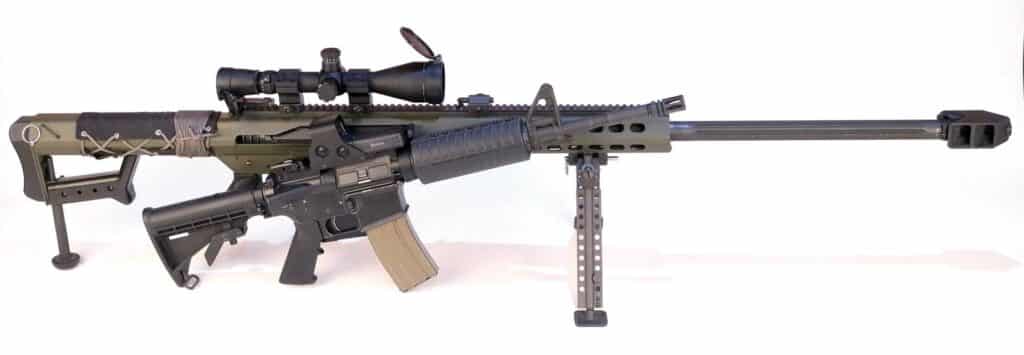
Ruminations
I bought this rifle with its superlative Leupold scope really not thinking I would shoot it much. Given its prodigious mass and inimitable power, I assumed the thrill would pass and I would index to some other shiny trinket. However, as I take inventory of my ammo I have likely run 200 rounds or more through this beast in the first couple years I have owned it. Decent ammo does indeed cost a cast-iron fortune, but it is amazingly satisfying to command this much power under control.
There still yet remains a place for the cheap bulk ammo made in somebody’s basement out of pulled components. This stuff really doesn’t shoot terribly straight compared to the top-flight fodder from Hornady. However, if you want to impress your daughter’s new boyfriend in a seriously lasting way, just drag out the Barrett and let the kid run half a dozen rounds through it. He’ll ask to keep the big empties for souvenirs. He will also rightfully fear any guy bad enough to own such a beast. A little healthy fear in your typical teenage boy is almost always a good thing.

SPECIFICATIONS
- CALIBER: 12.7x99mm/.50BMG
- OVERALL LENGTH: 57in
- BARREL LENGTH: 29in
- WEIGHT: 31lb
- ACTION: Recoil-operated rotating bolt
- FEED: 10-round detachable box magazine
| This article first appeared in Small Arms Review V24N7 (Aug/Sep 2020) |



